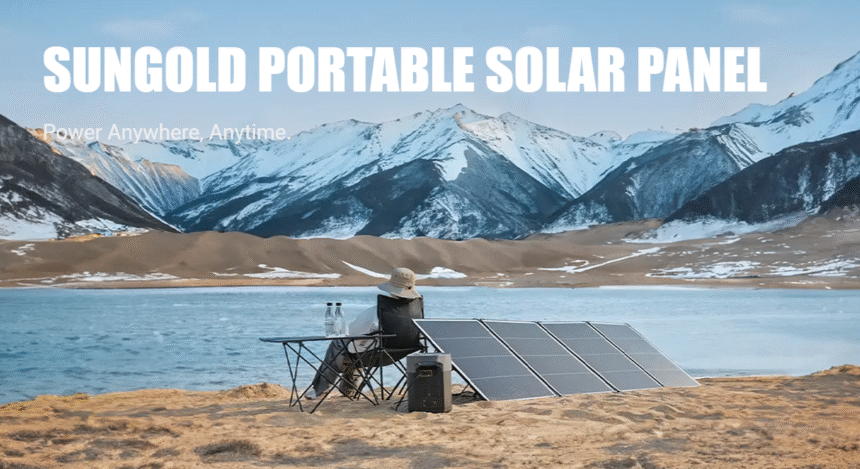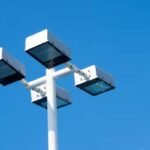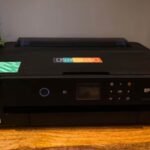From weekend camping to remote work and emergency backup, portable solar is the simplest way to turn sunlight into everyday electricity—without fuel, fumes, or noise.
Table of Contents
What Counts as “Portable Solar Panels”?
Why 200W Solar Panels Hit the Sweet Spot
Where Portable Solar Shines (Real-World Use Cases)
How to Choose a Portable 200W Panel: A Buyer’s Checklist
Quick System Recipes (What 200W Can Power)
4 Practical Tips to Get More From Your Panel
What’s Next: Trends to Watch
What Counts as “Portable Solar Panels”?
Portable solar panels are lightweight, foldable or briefcase-style photovoltaic modules designed to be moved and set up in minutes. Unlike roof-mounted arrays, they prioritise:
Carryability: handles, bags, folding hinges
Plug-and-play use: MC4/DC5521/XT60 connectors, ready for power stations
Rugged build: weather-resistant laminates and frames, reinforced corners
Modular scaling: easy to chain panels for higher power when you need it
The result is mobile energy you can take on a camping trip, park beside a van, or deploy during a grid outage—then pack away just as quickly.
Why 200W Solar Panels Hit the Sweet Spot
If you’re new to portable solar, 200W is often the most versatile starting point:
Useful daily energy: In good sun (about 4 peak-sun-hours), a 200W panel can produce roughly 600–800 Wh/day, enough to keep phones, cameras, drones, a laptop, lights, and even a 12 V travel fridge going with a compatible battery/power station.
Portable size/weight: Larger panels (300–440W) add output but can be bulky. 200W typically balances carryability with real-world power.
Scalable: Start with one Sungold 200W solar panel. If your needs grow (say, adding a coffee maker or bigger fridge), you can daisy-chain a second panel to double the harvest.
Many modern portable panels pair high-efficiency cells (TOPCon/IBC) with multi-busbar layouts to improve weak-light performance—handy at dawn, dusk or on cloudy days. Ruggedised designs also push durability further with IP67–IP68 weather protection, certified consumer-grade PV standards (e.g., IEC 63163), and multi-year warranties—important for outdoor and field use.
Where Portable Solar Shines (Real-World Use Cases)
1) Camping & Vanlife
Keep a 12 V fridge, lights, and devices powered for days. A 200W panel plus a 500–1,000 Wh power station is a popular starter combo for couples or solo travellers.
2) Remote Work & Field Ops
Run a laptop + monitor, charge camera/drones, and top up radios or test gear. Foldable panels deploy quickly beside a site hut, tripod, or vehicle.
3) Emergency & Disaster Readiness
During outages, a 200W kit with a small battery can keep communications, medical devices (consult device specs), lights, and essentials going—quietly and without fuel storage.
4) Home Backup & Off-Grid Supplements
Use portable panels as a spillover source: top up a home power station, cut daytime grid use, or charge garden tools. On weekends, take the same kit outdoors.
How to Choose a Portable 200W Panel: A Buyer’s Checklist
1) Real Output & Efficiency
Look for a realistic operating wattage, not just a peak label. High-efficiency cells (e.g., TOPCon/IBC) and multi-busbar designs help sustain output in weak light.
2) Weight & Packability
If you’ll carry it far, every kilogram matters. Panels with composite stacks and smart folding can be ~30% lighter than typical peers, easing transport and setup.
3) Weatherproofing & Durability
IP67–IP68 ingress protection guards against rain, dust and sand; reinforced laminates resist vibration and impacts. Consumer-grade PV standard IEC 63163, plus CE/RoHS/REACH compliance, signals safety and quality.
4) Connectors & Compatibility
Check MC4/DC5521/XT60 or brand-specific leads. Confirm open-circuit voltage (Voc) and operating current match your power station or charge controller. Prefer kits that include adapters.
5) Expandability
Ensure your panel and battery allow series/parallel linking. A modular design lets you add a second 200W panel for 400W days without replacing gear.
6) Stands, Bags & Accessories
Kickstands and adjustable legs help angle the panel; carry bags protect hinges and cells; longer cables aid shade management (panel in sun, devices in shade).
7) Warranty & Support
A multi-year warranty and responsive tech support are worth paying for, especially if you rely on your kit in harsh conditions. (Many premium portable panels now offer 5-year warranties.)
Quick System Recipes (What 200W Can Power)
Estimates assume ~4 peak-sun-hours/day. Actual results vary with latitude, season, weather, panel angle, shading, and equipment efficiency.
200W Panel + 512–1,024 Wh Power Station
Typical day: Phone x6–10, laptop x1–2, camera/drone packs, LED lights, and 12 V fridge (40–60 W-avg) for a day (with sensible door openings).
Why it works: ~600–800 Wh harvest/day offsets most of your daily draw.
Two 200W Panels (≈400W) + 1–2 kWh Power Station
Add-ons: Occasional coffee maker (700–1,000 W), induction cooktop (short bursts), power-tool charging.
Note: High-draw appliances need the inverter capacity and battery buffer—the panels replenish between uses.
200W Panel + 12 V Lead-Acid/LiFePO₄ + MPPT Controller
DIY friendly: Great for vans and cabins; choose MPPT for better yield; include fusing and proper cable gauges.
4 Practical Tips to Get More From Your Panel
Chase the Angle
Tilting the panel toward the sun can add 10–25% yield versus laying it flat. Re-angle at lunch if you’re around camp.
Keep It Cool & Clean
Heat reduces voltage; elevate the panel slightly for airflow. Wipe dust, salt spray and pollen—small layers can shave off real watts.
Mind the Shade
A strip of shade across a string can cut output dramatically. Use longer leads to place the panel in sun, batteries/devices in shade.
Plan Your Loads
Run heavier charging (e-bike, drone, power-tool packs) during peak sun while the panel is producing, so the battery sees less depth-of-discharge overnight.
What’s Next: Trends to Watch
Higher-efficiency cells (TOPCon/IBC): More watts per square metre, better dawn/dusk performance.
Ruggedised composites: Panels that are lighter yet tougher, with improved drop/vibration resistance for overland travel.
Consumer-grade PV standards: Wider adoption of IEC 63163 to benchmark durability for outdoor lifestyle use.
Modular ecosystems: Panels, batteries and inverters designed to snap together, scale up, and integrate with smart home/vehicle systems.
A Note on Data & Examples
Specifications and scenario insights in this guide draw on field-tested portable systems in the 200–440 W class, including design traits such as 30% lighter builds, IP67–IP68 weatherproofing, IEC 63163 certification, multi-busbar high-efficiency cells (up to ~22.7%), and 5-year warranties common to premium models in this category.
If you’re comparing options, look for: clear spec sheets, certifications, connector details, and a scaling path (series/parallel) so your 200W starter kit can grow with your needs.
Optional Disclosure (if needed):
This article draws on engineering data from a premium portable panel range in the 200–440 W class to illustrate real-world choices and trade-offs.
Have specific devices or a target daily watt-hour budget? Share your list and constraints, and I’ll map a 200W (or 200W-scalable) kit that fits your carry weight, connectors, and charging needs.









